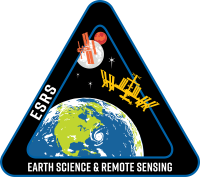| Images:
| All Available Images Low-Resolution 388k
|
| Mission: |
ISS066
|
| Roll - Frame: |
E - 77622
|
| Geographical Name: |
AUSTRALIA-T
|
| Features: |
ISLAND, CAPE PORTLAND, CLARKE ISLAND, CAPE BARREN ISLAND, LADY BARRON, WHITEMARK, LACKRANA, FLINDERS ISLAND, KILLIECRANKIE, WINGAROO, FURNEAUX GROUP, INNER SISTER ISLAND, SISTER ISLANDS CONSERVATION AREA, OUTER SISTER ISLAND, BASS STRAIGHT
|
| Center Lat x Lon: |
40S x 148.5E
|
| Film Exposure: |
|
N=Normal exposure, U=Under exposed, O=Over exposed, F=out of Focus
|
| Percentage of Cloud Cover-CLDP:
| 25
|
|
| Camera:: |
N6
|
|
| Camera Tilt: |
34 |
LO=Low Oblique, HO=High Oblique, NV=Near Vertical
|
| Camera Focal Length:
| 72
|
|
| Nadir to Photo Center Direction: |
S |
The direction from the nadir to the center point, N=North, S=South, E=East, W=West
|
| Stereo?:
|
| Y=Yes there is an adjacent picture of the same area, N=No there isn't
|
| Orbit Number: |
|
|
| Date: |
20211110 |
YYYYMMDD
|
| Time: |
233846 |
GMT HHMMSS
|
| Nadir Lat: |
37.5S
|
Latitude of suborbital point of spacecraft |
| Nadir Lon: |
148.9E
|
Longitude of suborbital point of spacecraft |
| Sun Azimuth: |
64 |
Clockwise angle in degrees from north to the sun measured at the nadir point
|
| Space Craft Altitude: |
228 |
nautical miles
|
| Sun Elevation: |
55 |
Angle in degrees between the horizon and the sun, measured at the nadir point
|
| Land Views: |
ISLAND, ISLANDS
|
| Water Views:
| STRAIT
|
| Atmosphere Views: |
|
| Man Made Views:
|
|
| City Views:
|
|
Photo is not associated with any sequences
|

 Photo #: ISS066-E-77622 Date: Nov. 2021
Photo #: ISS066-E-77622 Date: Nov. 2021
